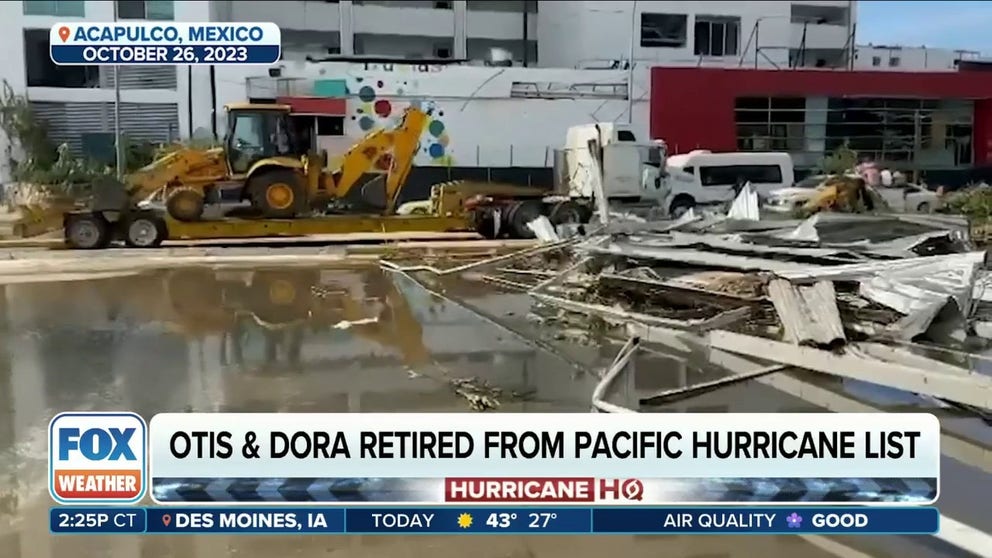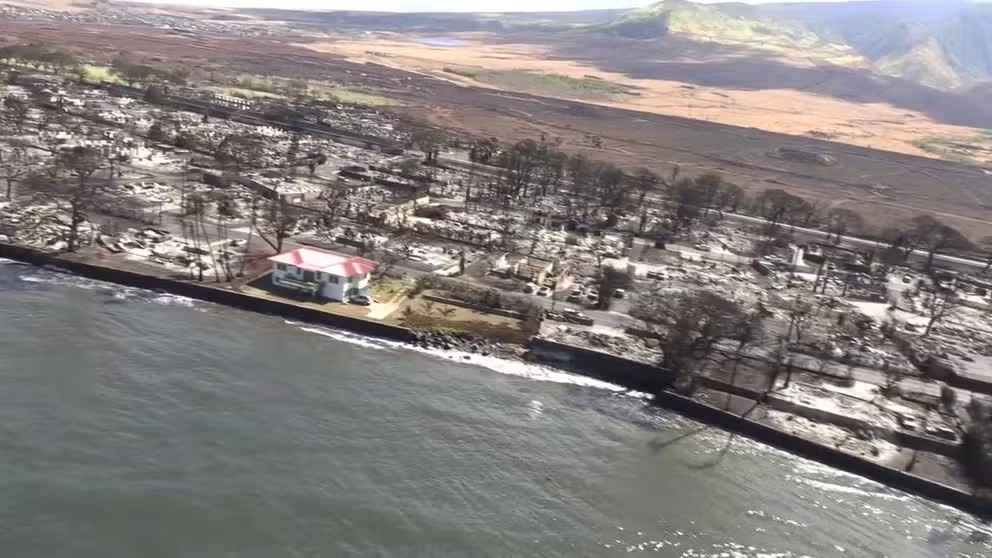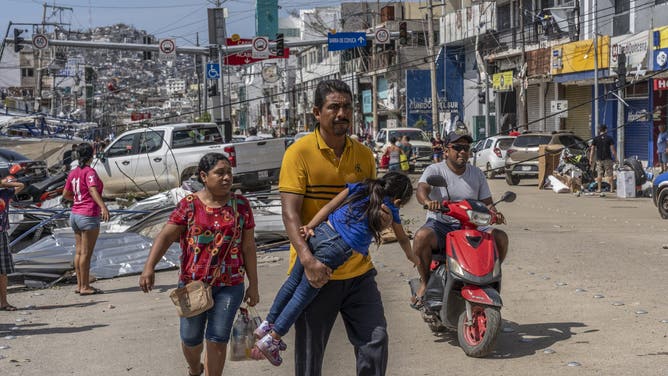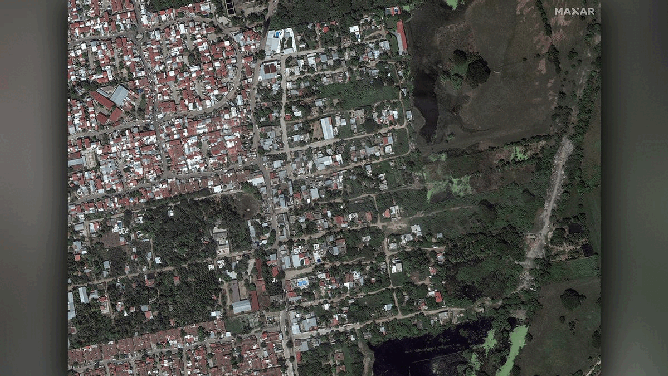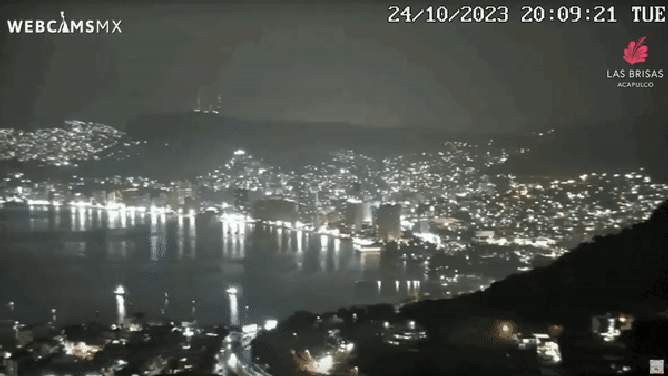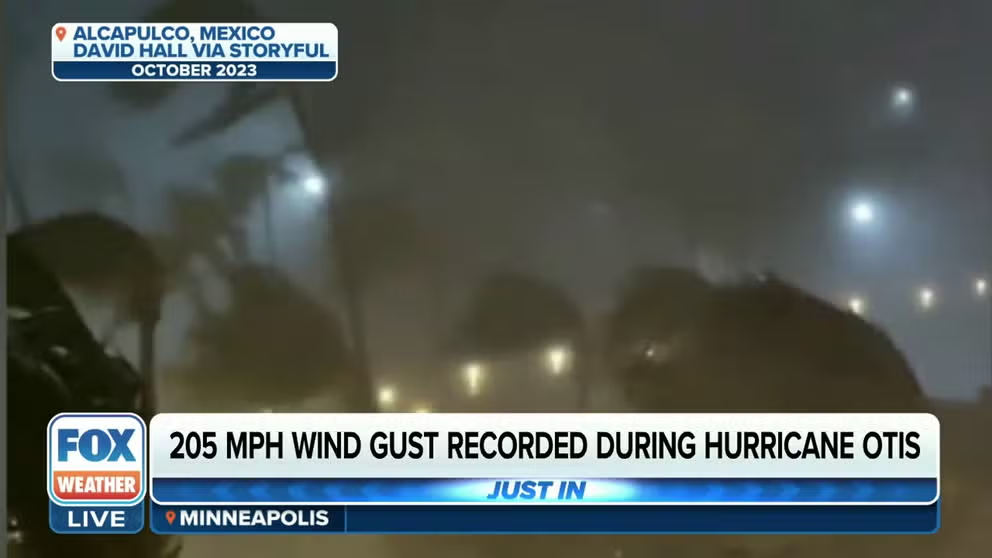Hurricane names Dora, Otis retired from Pacific list after deadly wrath
The World Meteorological Organization Hurricane Committee elected to retire two hurricane names after the 2023 Hurricane Season which will change the 2029 Hurricane Season names.
Hurricane names Dora and Otis retired
The WMO voted to retire North Eastern Pacific hurricane names Dora and Otis. For the first time since 2014, the committee did not retire any Atlantic names.
Farewell to hurricane names Dora and Otis, which each brought destruction last year in the Pacific Ocean basin. The World Meteorological Organization retired both names on Wednesday, despite one of those tropical cyclones never making landfall.
The WMO maintains six lists of hurricane names that repeat every six years.
"The only time that there is a change [in a name] is if a storm is so deadly or costly that the future use of its name on a different storm would be inappropriate for obvious reasons of sensitivity," writes the National Hurricane Center. "If that occurs, then at an annual meeting by the committee (called primarily to discuss many other issues) the offending name is stricken from the list and another name is selected to replace it." The practice of retiring names started in 1954.
Both names come from the Eastern North Pacific list of names – the first time since 2015 a Pacific storm name was retired, and the first time since 1997 that multiple names were retired.
THE BEASTS OF THE ATLANTIC: 96 RETIRED HURRICANE OR TROPICAL STORM NAMES
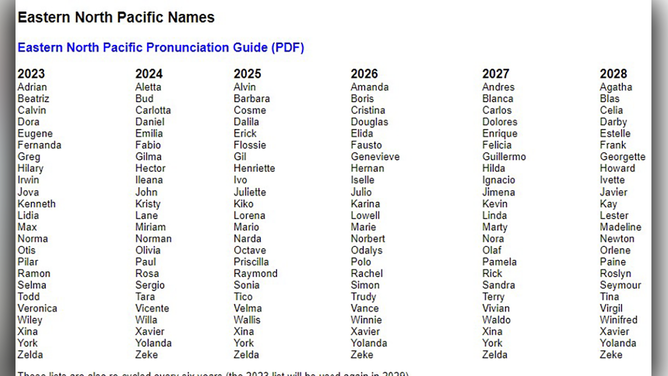
The list of Eastern North Pacific Hurricanes names that rotate every six years. The 2023 list will be the 2029 list minus Otis and Dora.
(National Hurricane Center / NOAA)
Dora made history by traveling from the Atlantic to the Western Pacific
Dora actually started in the Atlantic Ocean as a tropical disturbance, then crossed Central America and strengthened into a tropical depression near Mexico on July 31.
"A number of storms have crossed from the Atlantic to the Pacific," FOX Weather Hurricane Specialist Bryan Norcross said. "Storms usually track east to west farther south, where the terrain is more cooperative. Also, the ‘normal’ direction of movement of a hurricane is east to west or northwest."
Dora continued on a long journey west across the Pacific. When the hurricane passed the international date line, it officially traveled through three regions of the Pacific Ocean - a rare feat for any storm.
BEWARE THE ‘I’ STORM: IT HAS MORE RETIREES THAN ANY LETTER USED FOR ATLANTIC HURRICANE NAMES
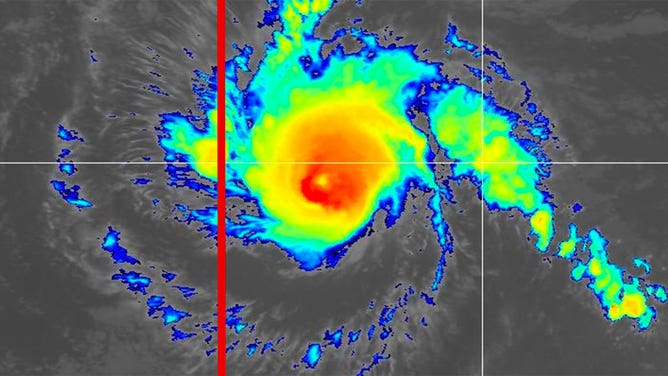
Hurricane Dora is seen on a satellite image taken Aug. 11, 2023. The International Date Line is highlighted in red.
(NOAA)
According to a NOAA database, only a handful of cyclones have completed the trek from the eastern and central regions to wind up in the Western Pacific. The latest cyclone to complete the quest was Hurricane Hector back in 2018, but other storms that have recently completed the trek include: Jimena (2003); Dora (1999); John (1994); Enrique (1991); and Georgette (1986).
According to the NHC, Dora is one of two cyclones that accomplished that feat with winds of at least 74 mph throughout all regions of the ocean. In the West Pacific, it became Typhoon Dora on Aug. 11. The disturbance turned cyclone traveled 9,800 miles and survived from July to August.
5 DIFFERENT NAMES FOR HURRICANES AROUND THE WORLD
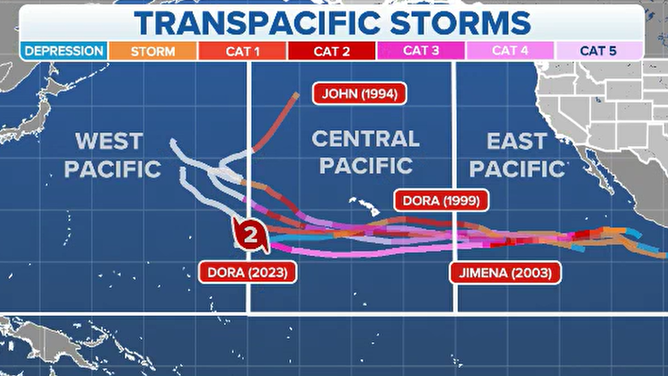
Tropical cyclones that started in the eastern Pacific and made it into the western Pacific.
(FOX Weather)
Dora fans deadly wildfires in Hawaii
Despite never making landfall, Dora proved deadly. It was a large factor in the worst disaster in Hawaii's history. Then Category 4 Hurricane Dora passed hundreds of miles to the south of Hawaii, but combined with a strong ridge of high pressure to the north to create widespread wind gusts of 80-85 mph. A wildfire exploded in size across the parched land as the winds quickly carried flames and embers.
The blaze descended on Lahaina so quickly that people dove into the ocean to escape the fire. The blaze killed at least 101 people, according to the AP.
"The Committee retired Dora from the eastern North Pacific name list, not because of direct damage, but because of sensitivities to the name Dora and the indirect meteorological role it played in the devastating wildfires in Maui, Hawaii, in August 2023," the WMO released in a statement.
AERIAL VIDEO SHOWS COMPLETE DEVASTATION ACROSS PARTS OF MAUI AFTER CATASTROPHIC BRUSH FIRES
New video of damage from Lahaina brush fires
File: An aerial video of damage in Lahaina, Hawaii, from deadly brush fires.
Second time ‘Dora’ retired
And, this is not the first time the hurricane name Dora has been retired. Many historians and weather watchers recall Hurricane Dora being retired after its disastrous impacts in Sept. 1964.
The original Hurricane Dora crashed ashore near St. Augustine, Florida with 110 mph winds – the first hurricane in the region in at least 79 years, according to NOAA.
Dora was retired from the Atlantic list of names after the season due to its historic damage across the Southeast.
RETIRED HURRICANE NAMES STILL IN ROTATION DESPITE THEIR DISASTROUS HISTORY
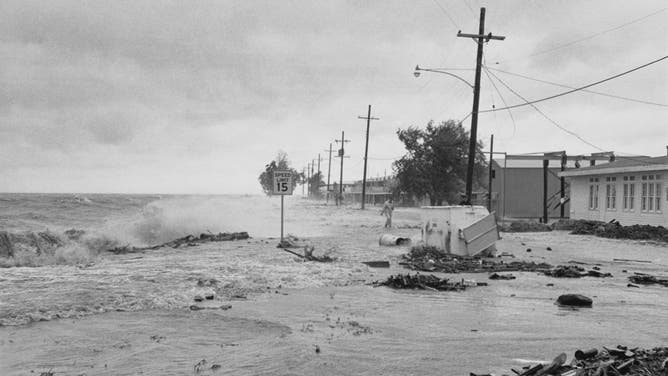
File: A man walks the beach as Hurricane Dora's stormy Atlantic Ocean chews away at beachfront homes.
(Photo by Bettmann Archive/Getty Images / Getty Images)
Hurricane Otis causes catastrophic damage in Mexico
Hurricane Otis' name was retired after the storm made landfall near Acapulco, Mexico on Oct. 25 as a massive Category 5 with 160 mph winds. The NHC said that Otis was the strongest hurricane in the Eastern Pacific to make landfall in the satellite era, and the only Category 5 to make landfall.
"Because the storm intensified so quickly, with wind speeds increasing by 115 mph within 24 hours, the more than one million people living in and around the city had very little time to prepare for the monster storm ahead of landfall," wrote NOAA. "Only one other storm on record, Hurricane Patricia in 2015, exceeded Otis’ rapid intensification in the Eastern Pacific, with a 120-mph increase in 24 hours."
HURRICANE OTIS LEAVES BEHIND ‘NIGHTMARE SCENARIO’ AFTER STRIKING ACAPULCO, MEXICO
According to Mexican authorities, 51 people died and 34 are still missing, over 120 hospitals and medical clinics were damaged, and 10,000 utility poles were destroyed. Economic losses were estimated to be $3.2 billion. First responders had trouble getting to the hardest hit areas.
"When Otis first hit, mudslides outside the city in mountainous terrain prevented crews from traveling to the city to provide aid," NOAA continued. "The 10,000 troops that were deployed to the area lacked the tools needed to clear mud and downed trees off roads. Acapulco’s commercial and military airports were also badly damaged."
Hurricane Otis also churned up one of the highest wind gusts on Earth. The National Autonomous University of Mexico's Tidal Service confirms a weather station recorded a 205 mph wind gust during the storm, which would mark one of the strongest wind speeds ever recorded on Earth.
The gust comes in as a close seventh for highest wind gusts worldwide, according to YaleClimateConnections.org. Fifth, sixth and seventh place were separated by only 3 mph.
205 mph wind gust recorded during Hurricane Otis
The National Autonomous University of Mexico's Tidal Service confirms a weather station recorded a 205 mph wind gust during Hurricane Otis, which would mark one of the strongest wind speeds ever recorded on earth.
The WMO replaced Dora and Otis with Debora and Otilio. So far, 21 names have been retired from the Central and Eastern North Pacific names. A total of 96 names have been retired from the Atlantic names.
The WMO did not retire any Atlantic hurricane names from 2023 – the first time since 2014 the year's list has remained intact.
HURRICANE SEASON 2024: HERE'S WHAT TO LOOK FOR IN THE TROPICS THIS YEAR
